Clutch Does not Disengage
If the clutch does not disengage, the problem is not necessarily the clutch itself.
Frequent causes include faults in the release system, a jammed pilot bearing, or non-compliance with important installation requirements.
Clutch Does not Disengage - Therefore check:
- Were all professional check points observed during installation?
- Clutch release system (Worn parts? Cable, hydraulics, pivot points. Correct setting?)
Excessive lateral runout of clutch disk
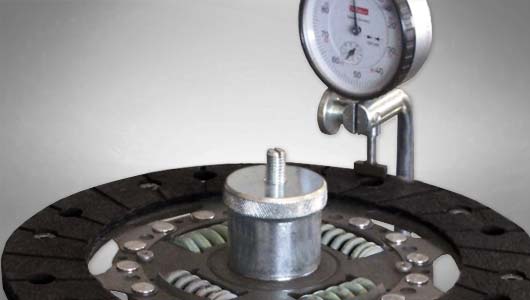
Cause:
- Deformation during transport or installation Lateral runout of approx. 0.5 mm exceeded
Consequence:
- The specific lift on the pressure plate is no longer sufficient to ensure full disengagement
Please note:
Always check clutch disks for lateral runout before installation.
Fretting corrosion on hub spline
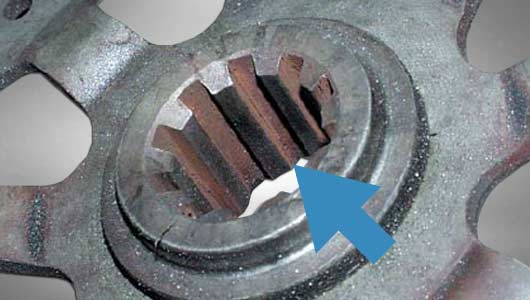
Cause:
- Lubrication instructions not followed during installation
Consequence:
- Clutch disk fails to slide freely on transmission shaft, jams. Clutch facing still contacts friction surface on flywheel. Grab can be evident in the early stages.
Please note:
Always use high-performance lubricant, SACHS no. 4200 080 050.
Hub spline damaged
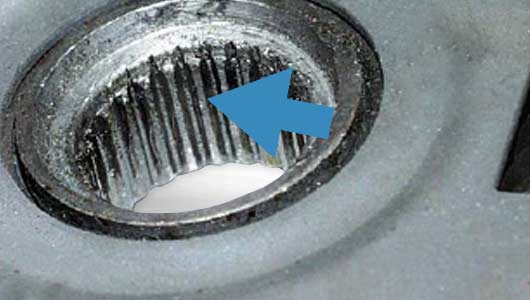
Cause:
- Transmission shaft and clutch hub forced together during installation
Consequence:
- Clutch disk jams instead of slides on transmission shaft.
Please note:
Center the clutch disk - using the right tools - during installation! Insert the transmission shaft carefully
Clutch disk "dished" (arched)
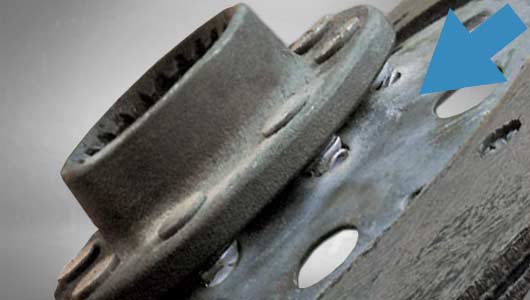
Cause:
- Transmission shaft jammed against clutch disk hub during installation.
- Deformation due to severe overheating (blue discoloration of steel components).
Consequence:
- Prescribed lift on pressure plate is no longer sufficient to smoothly disengage clutch.
Please note:
Also causes drag due to insufficient lift on pressure plate.
Interfacing springs or driving plate fractured
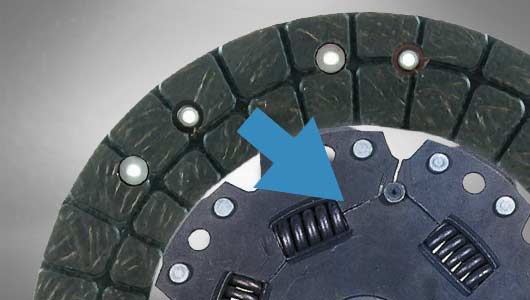
Cause:
- Engine or transmission dropped with the transmission shaft still in the clutch disk hub. Fracture caused by lever effect
- Parallel or angular deviation
Consequence:
- Excessive lateral runout of clutch disk.
Hub spline worn / burr formation
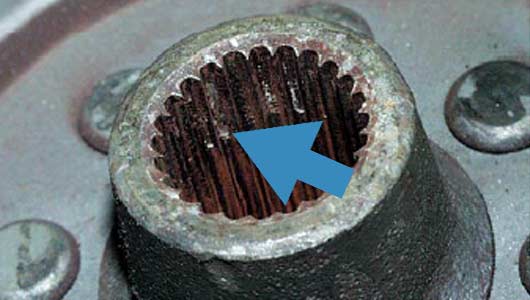
Cause:
- Clutch housing and crankcase flange not centered, wobble motion due to angular or parallel deviation
- Pilot bearing missing
- Transmission input shaft has excessive play or is not guided
Consequence:
- Hub jammed or tilted on transmission input shaft
Please note:
Can also cause noise.
Excessive roll speed / burst facings
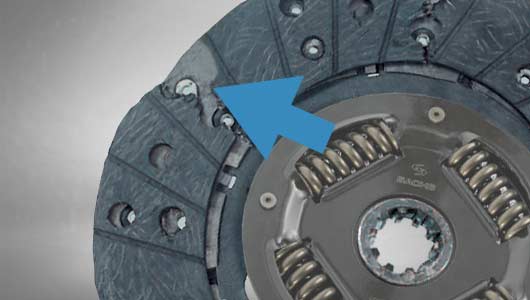
Cause:
- Driving at high roll speeds in low gear with the clutch pedal depressed, clutch disk exceeds burst speed
- Selecting the wrong (too low) gear when downshifting
Consequence:
- Facing debris gets stuck in the flywheel or in the clutch pressure plate housing.
Please note:
The engine is not involved at all! Facing burst speed is around 1.7 to 2 times higher than the maximum engine rpm. Overheated facings may burst earlier.
Torsional damper destroyed by overloading
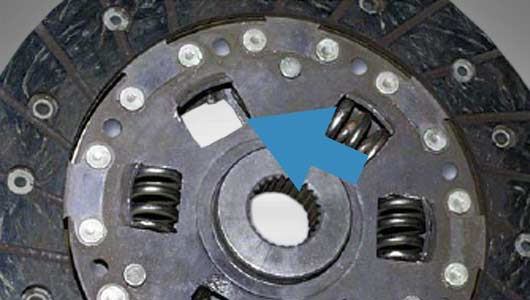
Cause:
- Low-revving driving style. Driving in high gear at low speed and full throttle.
- Extreme irregular engine operation
- Worn joints in the driveline
Consequence:
- Fragments are thrown outwards and get stuck in the facings.
Tangential leaf springs bent or deformed
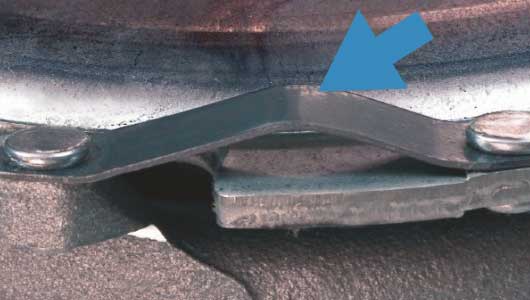
Cause:
- Extreme thrust load due to
- Incorrect shifting
- Improper towing maneuvers
- Operational errors on the roller test stand
- Play in the driveline
- Deformation during installation
Consequence:
- Insufficient pressure plate lift.
Diaphragm spring contacts torsional damper during release
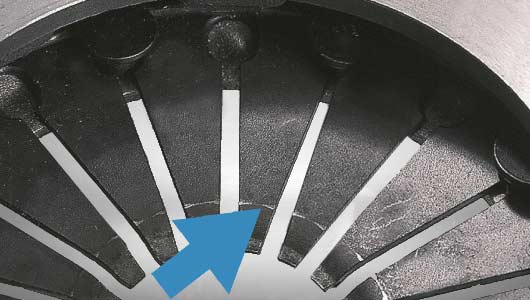
Cause:
- Permissible release travel exceeded
- Incorrect disk installed
Consequence:
- Diaphragm spring drives clutch disk
Please note:
Also causes noise
Diaphragm spring tips / release levers ground off
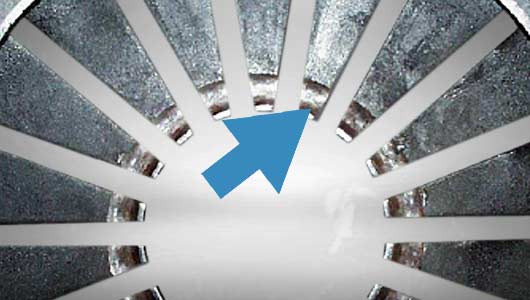
Cause:
- Guide tube for the clutch release bearing bent
- Engine / transmission not correctly centered
Consequence:
- Continuous off-center clutch release bearing contact with the diaphragm spring tips exceeding the self-centering capacity will cause relative motion and therefore wear. This also applies to the release levers.
Pressure plate fractured / extreme overheating
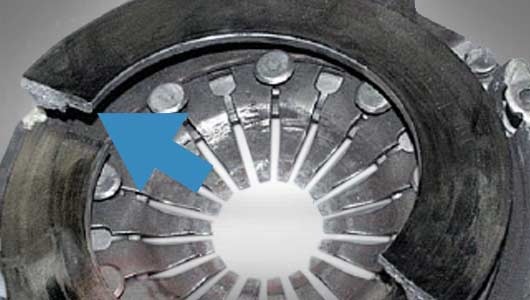
Cause:
- Clutch permitted to slip constantly
- Insufficient clamp force
- Problems with the release system, e.g. stiffness or lack of clutch play
- Contamination with oil or grease
- Excessive flywheel thickness
Consequence:
- Insufficient pressure plate lift.
End plate deformed (MX clutch pressure plates – VW, Audi, Seat, Skoda)
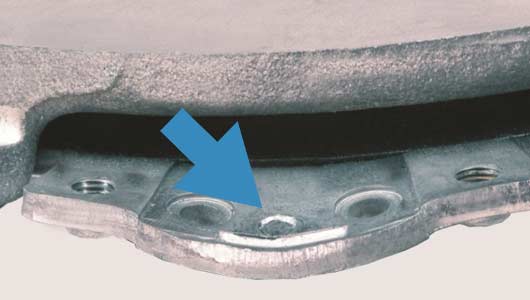
Cause:
- Incorrect clutch pressure plate installed
- End plate / clutch pressure plate incorrectly positioned relative to locating pins on flywheel
Consequence:
- Housing deformed such that pressure plate has insufficient lift.
Preliminary damper completely destroyed
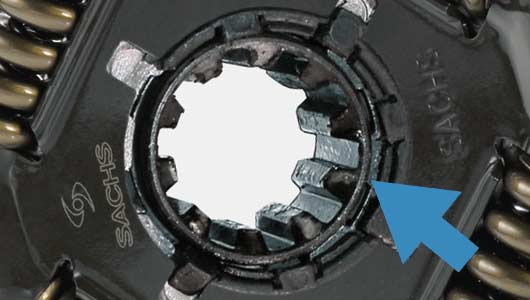
Cause:
- Transmission shaft jammed against clutch disk hub during installation.
Consequence:
- Serious damage leading to component failure.
Please note:
Multi-step torsional damping mechanisms have a complex, almost delicate structure. Handle with the utmost care during installation.

 English
English







